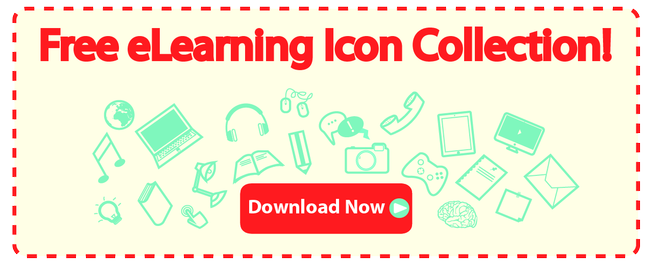Are you tired of reading all kinds of tips and tricks that don't work to grab your learner's attention? It's time you do something about it and start captivating your learners for real.

Grab your learners attention instantly--just remember these 20 things:
1. Make it all about them. Content should be designed with your learners in mind. Always imagine you are the person taking the course. Ask yourself if YOU would enjoy the learning experience. Is it something you would enjoy?
2. Reduce your text. Remove unnecessary details or redundant facts. Studies show that users remember content more if they’re not overloaded with too much information.
3. Format for scanning and skimming. Chunked content is much easier to read. There is nothing worse than a dump of text that it's practically screaming "dont' read me!" So break up your content into bites that are easy to digest.
4. Tell them why. Give your learners a reason to explore the course. Adult learners always want to know why they are learning something and how it’s going to help them in real life.
5. Try video. Most people prefer watching a video than reading. Sometimes a short 2 minute video can offer the learner a quick way to explain a concept or idea. Besides, using video is a great way for helping learners understand content in context.
6. Be useful. Have the learners do something with the information that you give them. Try including scenarios where they have to actively make decisions. This way you’re helping learners use the information and make it more meaningful.
7. Write tight. Don’t waste learner's time. Be concise and straightforward in your writing. If you take too long to get to your point, you'll lose people's interest rapidly. Remember, attention spans are short.
8. Set expectations. Be clear about your course objectives and how students will benefit from taking learning the material. Constantly remind your audience these benefits.
9. Stand out. People will most definitely be judging your course by their visual appearance so you'll want to make sure you go beyond just typical power point slides. Besides, a course with a an awesome look and feel makes it more trustworthy and professional. Make your course attractive, use contrasting colors, powerful visuals and increase your font size.
10. Create eLearning for the real world. Focus on building courses that fit into the real daily tasks of the learners. Instead of bombarding students with a bunch of corporate-speak, build a course that puts them in real world situations and forces them to make decisions.
11. Keep it simple. Help users get through the course as fast as possible. Interruptions and/or uneccesary media can in fact have a negative impact on learning and retention. Interaction for interaction's sake is isn't worth it.
12. Surprise them. Surprise them with the high value content. Introduce thought-provoking questions, knowledge checks or surprising statements to stimulate their curiosity.
13. Make an impact. Experts have revealed that learners forget about 80% of what they have covered within 30 days of a learning event. To help reverse this huge memory loss, your eLearning courses must make a lasting impact.
14. Command attention. If you don't capture your learner's attention effectively they will not be ready to receive all the information and the learning opportunity is lost. Use words that trigger emotion, choose interesting visuals, make them do something or even add a little humor.
15. Make it relatable and human. Get your students to laugh and relax. Several studies prove that everything learned is filtered through emotions. In eLearning, you can appeal emotions through powerful images and compelling stories.
16. More Steak than Sizzle. Many eLearning courses puts more effort into the sizzle, not the steak. In other words, you need to focus more on meaning than media. If content is poor, no amount of "clicky-clicky- bling-bling" will change that.
17. Empower them. Sometimes we need empower learners to take charge of their own learning. Learners should have the flexibility to access the information based on their needs, experience, and current level of understanding. Free-up your navigation when you can!
18. Use a conversational tone. Being human increases trust. Who wants to chat with a corporation? Use everyday language to explain information.
19. Don’t use stock photos. Often times, stock images are just so generic that they fail to capture a real situation. IF they aren't chosen wisely, they will harm the learning experience, rather than enhance it.
20. Be clear. Include simple, relevant and specific instructions to guide the learners through the course. Tell people exactly how they got to that screen and what they should do there.
In summary, always be gathering and trying new ways to attract the your audience.









